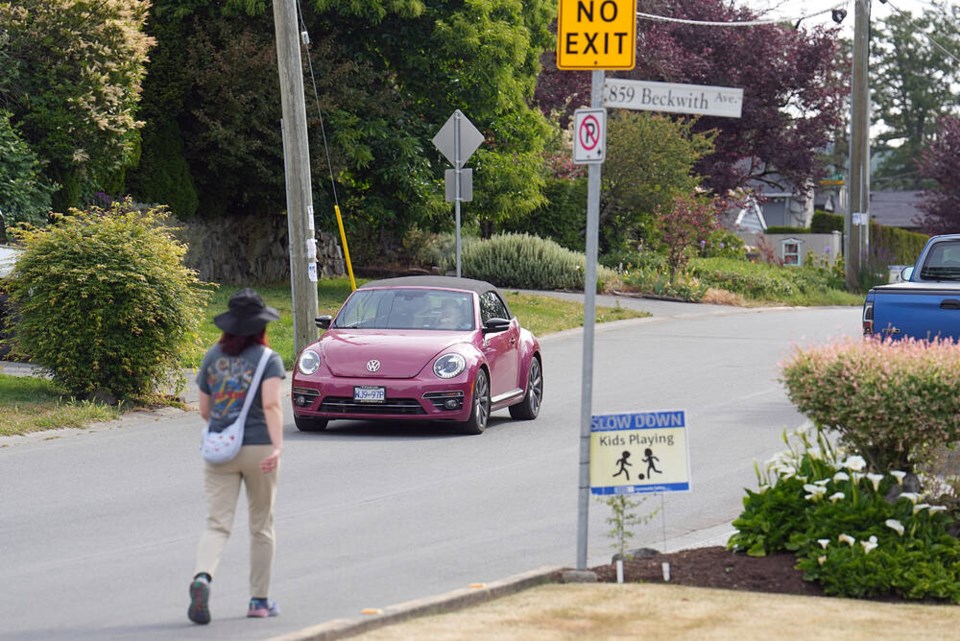Saanich council wants to see a provincial default speed limit of 30 km/h on roads without a centre line, and the Motor Vehicle Act renamed the Road Safety Act.
The motions are among those council endorsed this week in hopes they will be supported by the Union of B.C. Municipalities this fall and forwarded to the province for consideration.
It also wants municipalities to have the power to adopt a default speed limit for roads without speed signs within municipal boundaries.
The current default speed limit for municipal streets in B.C. is 50 km/h, but municipal councils have the authority to set speed limits on roads under their jurisdiction.
Coun. Zac De Vries, who brought forward the motions on behalf of the district’s transportation advisory committee, said because the provincial default is 50 km/h, municipalities have to reduce limits via bylaw and then install speed-limit signs on every block, resulting in substantial financial and administrative burdens.
De Vries said it’s time to modernize the Motor Vehicle Act, noting the UBCM resolutions are aligned with positions taken by the District of Saanich previously and in some cases build on past advocacy of the UBCM on road safety.
Saanich has reduced speed limits to between 25 km/h and 40 km/h on nine traffic corridors with a continuous yellow centre line, as well as in several neighbourhoods around the district.
Council was unanimous in endorsing the 30 km/h default limit for streets without a centre line, noting it had already established that limit in many parts of the district.
“I like the approach of saying the norm is 30, but where the case can be made, then you can go in the other direction. I think it provides sufficient flexibility,” said Coun. Karen Harper.
Harper said the motions, if endorsed by the province, would make it possible to have signage at the municipality boundary.
Coun. Teale Phelps Bondaroff added that reducing speeds reduces the likelihood and severity of accidents. “This is about keeping people safe on our roads,” he said.
The request for a lower default speed limit has been made to the province a number of times over the years, but Mayor Dean Murdock said that’s no reason not to ask again.
“I don’t see any harm in going back to ask for it. This is something that Saanich is clearly moving forward on,” he said.
When the province has been approached in the past, its response has been that each municipality has the authority to reduce its speed limits as it sees fit.
Murdock said while that is true, the districts then have to pay to erect signs on each block.
Council did not agree to two other motions suggested by the district’s transportation advisory committee, including enabling the use of red arrow traffic signals to signify when right-turning vehicles are prohibited from turning.
It also didn’t agree to push for a ban on right turns on red lights at intersections where a bike lane is present.
While some councillors argued the right-turn ban would improve safety at intersections, others argued it was a step too far.
Harper suggested Saanich could review how it handles intersection safety at a broader level.
“I don’t think that any one of us is saying that we’re not in favour of road safety — the question is how can we improve road safety including at intersections,” she said. “But I’m a little loath to get into defining what that solution ought to look like at this point.”
Murdock noted defeating the motion does not prevent council from at some point moving forward with these types of road interventions.
“Ultimately, I think we know that there’s wisdom in taking action to ensure people are safe on our roads. And when you think about some of our very busy intersections, protected movements for vulnerable road users really does ensure that we avoid serious injury and fatalities,” he said.
The deadline for submitting resolutions to the Union of B.C. Municipalities is June 15.



